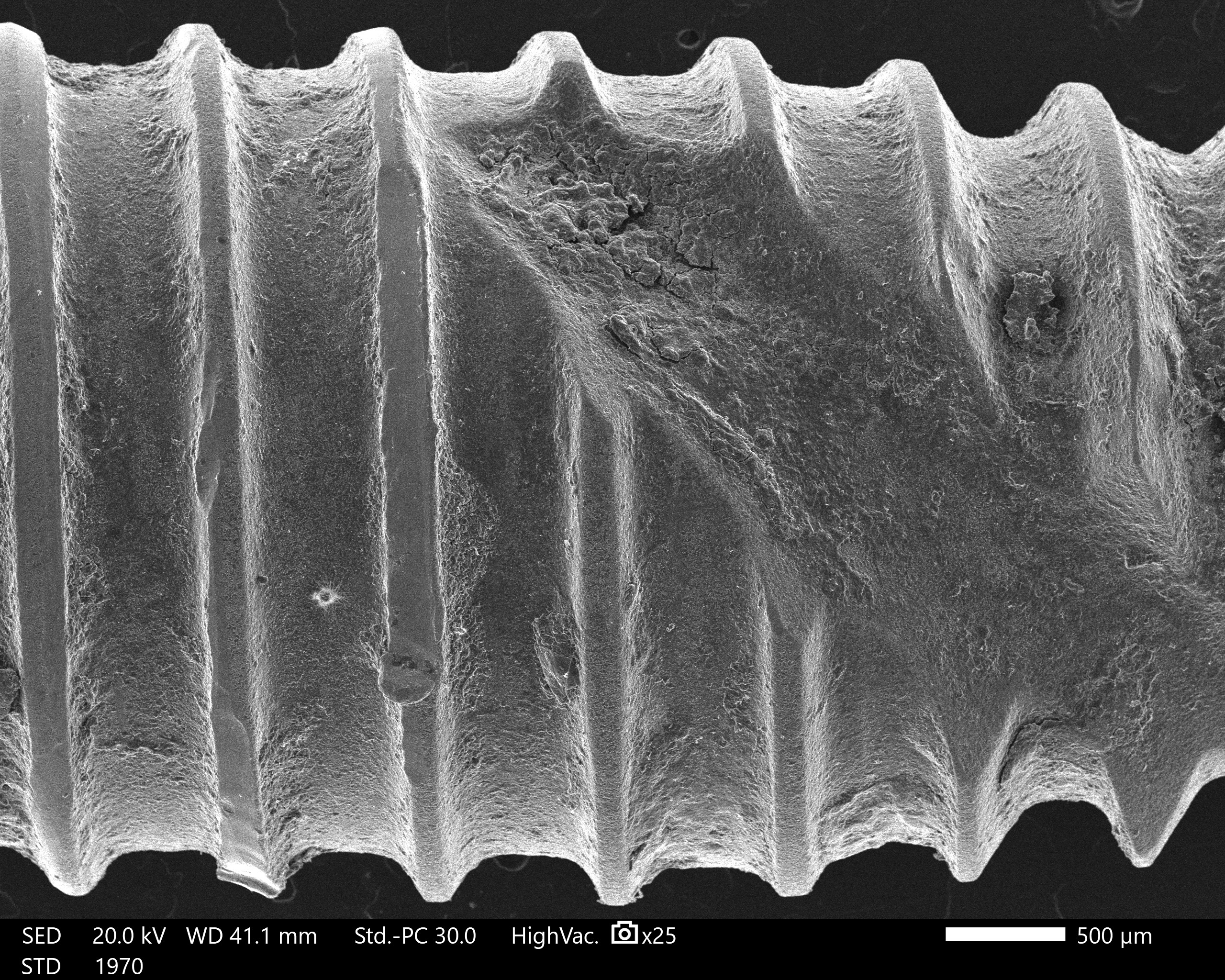IADR Abstract Archives
Effect of Different Wavelengths of Laser on Titanium Implants
Objectives: ● Evaluate the effect different wavelengths and power settings of dental lasers on surface topography of titanium implants.
○ Investigate the efficacy of each wavelength and power of laser irradiation on removal of the bacterial biofilm from the implant surface.
Methods: A total of 8 titanium implants are to be fixed on individually prepared acrylic blocks.
Each implant is to be alienated into four distinct sides (A, B, C and D). Each implant side is to be further divided into four areas (I, I, Ill and IV) for a total of sixteen test areas per implant. Each one of the four areas is to be irradiated at powers of 0.75 W, 1.0 W, 1.25 W and 1.5 W respectively and the processes repeated for the remaining sides of the implant. This method is to be replicated for each laser under investigation which are Er:YAG, Diode, Er,Cr:YSGG and Nd:YAG.
Using SEM, the implants will be scanned to investigate any alterations in surface topography and to observe the efficacy of each wavelength and power of laser on removal of the bacterial biofilm from the implant surface.
Results: Initial and second SEM scans were compared and each area given a degree using blinding method according to the classifications shown in Table (1).
Grade of alteration on all implants varied according to laser type and power as shown in Table (2). Both Diode and Er:YAG lasers showed mainly Class II alterations with Class III at higher intensities on the uninfected surfaces. Er,Cr:YSGG laser exhibited Class II on uninfected implants and Class I on infected implants up to 1.25 W, both of which shifted up to Class III and II ,respectively, at 1.5 W. The Nd:YAG laser showed an earlier and more evident progression from Class II to Class III with several Class IV alterations.
Grade of biofilm removal from infected implants varied according to laser type and power as shown in Table (3). The Diode laser showed a mix of Class I and II in biofilm removal using different intensities. In contrast, Er:YAG and Er,Cr:YSGG and Nd:YAG lasers consistently achieved Class II biofilm removal across all power intensities.
Conclusions: Most laser wavelengths exhibit efficacy in biofilm removal regardless of the power intensity used; however, extra caution needs to be taken when considering parameters such as power intensity and irradiation time in regards to the laser being used.
○ Investigate the efficacy of each wavelength and power of laser irradiation on removal of the bacterial biofilm from the implant surface.
Methods: A total of 8 titanium implants are to be fixed on individually prepared acrylic blocks.
Each implant is to be alienated into four distinct sides (A, B, C and D). Each implant side is to be further divided into four areas (I, I, Ill and IV) for a total of sixteen test areas per implant. Each one of the four areas is to be irradiated at powers of 0.75 W, 1.0 W, 1.25 W and 1.5 W respectively and the processes repeated for the remaining sides of the implant. This method is to be replicated for each laser under investigation which are Er:YAG, Diode, Er,Cr:YSGG and Nd:YAG.
Using SEM, the implants will be scanned to investigate any alterations in surface topography and to observe the efficacy of each wavelength and power of laser on removal of the bacterial biofilm from the implant surface.
Results: Initial and second SEM scans were compared and each area given a degree using blinding method according to the classifications shown in Table (1).
Grade of alteration on all implants varied according to laser type and power as shown in Table (2). Both Diode and Er:YAG lasers showed mainly Class II alterations with Class III at higher intensities on the uninfected surfaces. Er,Cr:YSGG laser exhibited Class II on uninfected implants and Class I on infected implants up to 1.25 W, both of which shifted up to Class III and II ,respectively, at 1.5 W. The Nd:YAG laser showed an earlier and more evident progression from Class II to Class III with several Class IV alterations.
Grade of biofilm removal from infected implants varied according to laser type and power as shown in Table (3). The Diode laser showed a mix of Class I and II in biofilm removal using different intensities. In contrast, Er:YAG and Er,Cr:YSGG and Nd:YAG lasers consistently achieved Class II biofilm removal across all power intensities.
Conclusions: Most laser wavelengths exhibit efficacy in biofilm removal regardless of the power intensity used; however, extra caution needs to be taken when considering parameters such as power intensity and irradiation time in regards to the laser being used.



